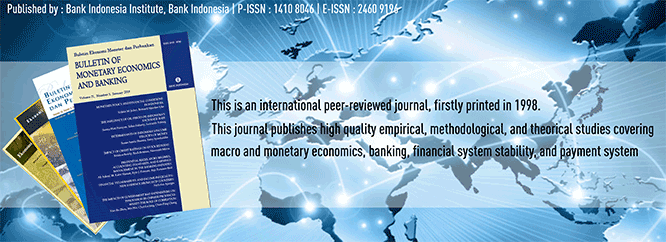
Document Type
Article
Abstract
A run on a particular bank can lead to a banking crisis if it spreads to other banks (contagious effect). In the case of Indonesia, bank runs have also reoccurred time and again. In 1992, bank runs affected several national banks, subsequently precipitating the liquidation of one bank. Then in 1997/1998, bank runs developed into the worst banking crisis ever witnessed in the banking history of Indonesia. Considering the extent of losses attributable to bank runs and the banking crisis, extensive studies on the early warning indicators of bank runs are urgently required to prevent future bank runs and bankingcrises. This paper aims to comprehensively analyse the early warning indicators of bank runs for all banks in Indonesia, both during the sample period of 1990-2005 as well as during the banking crisis in 1997-1998. The study of early warning indicators of bank runs uses the Markov-Switching model. To calculate the transition probability from a tranquil state to a state of bank run uses the Markov-Switching process through an auto-regressive approach. The change in deposits held at each bank is used as a variable of bank runs. The results of Markov-Switching (MS) show that the MS model is robust as an early warning indicator of bank runs. This is reflected by testing, which was performed on the actual incident of 102 banks, showing that the MS model only produced false signals an estimated 0.69% - 2.08% of the time.Keywords: Bank Runs, Early Warning Indicators, Markov-SwitchingJEL Classification: C22, G21
Recommended Citation
Simorangkir, Iskandar
(2012)
"KAJIAN INDIKATOR PERINGATAN DINI BANK RUNS DI INDONESIA: PENDEKATAN MARKOV-SWITCHING,"
Bulletin of Monetary Economics and Banking: Vol. 15:
No.
1, Article 9.
DOI: https://doi.org/10.21098/bemp.v15i1.55
Available at:
https://bulletin.bmeb-bi.org/bmeb/vol15/iss1/9
First Page
3
Last Page
37
Creative Commons License

This work is licensed under a Creative Commons Attribution-NonCommercial 4.0 International License
Country
Indonesia
Affiliation
Bank Indonesia

